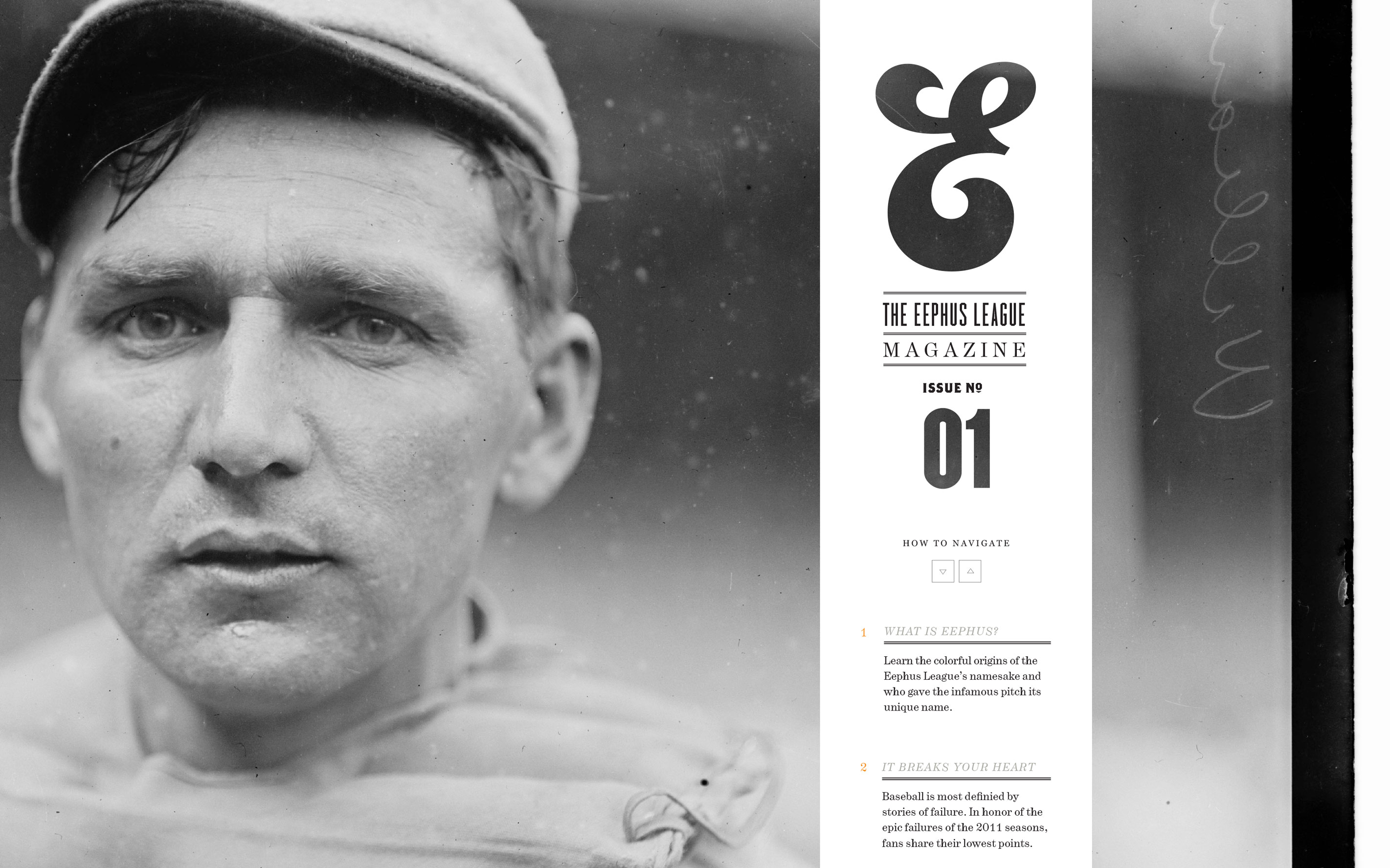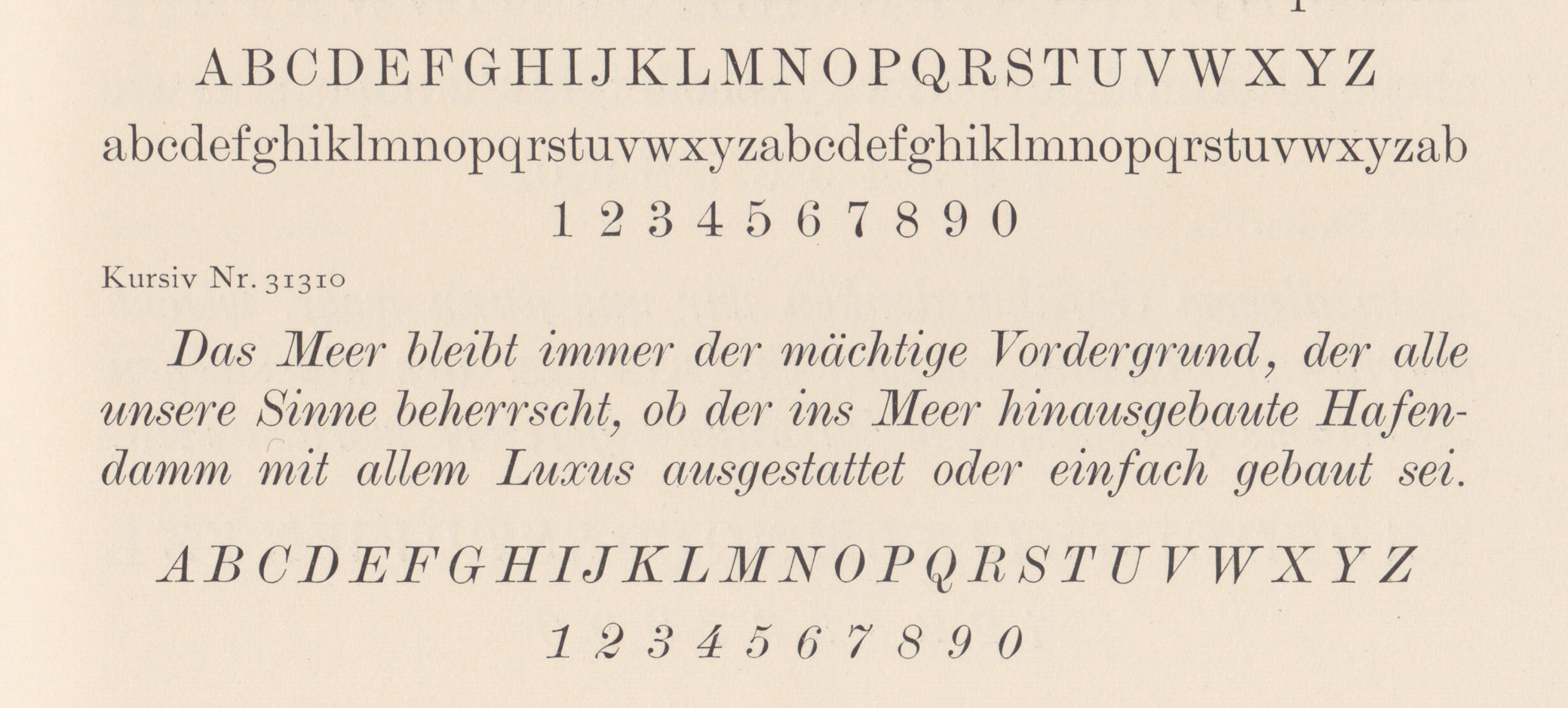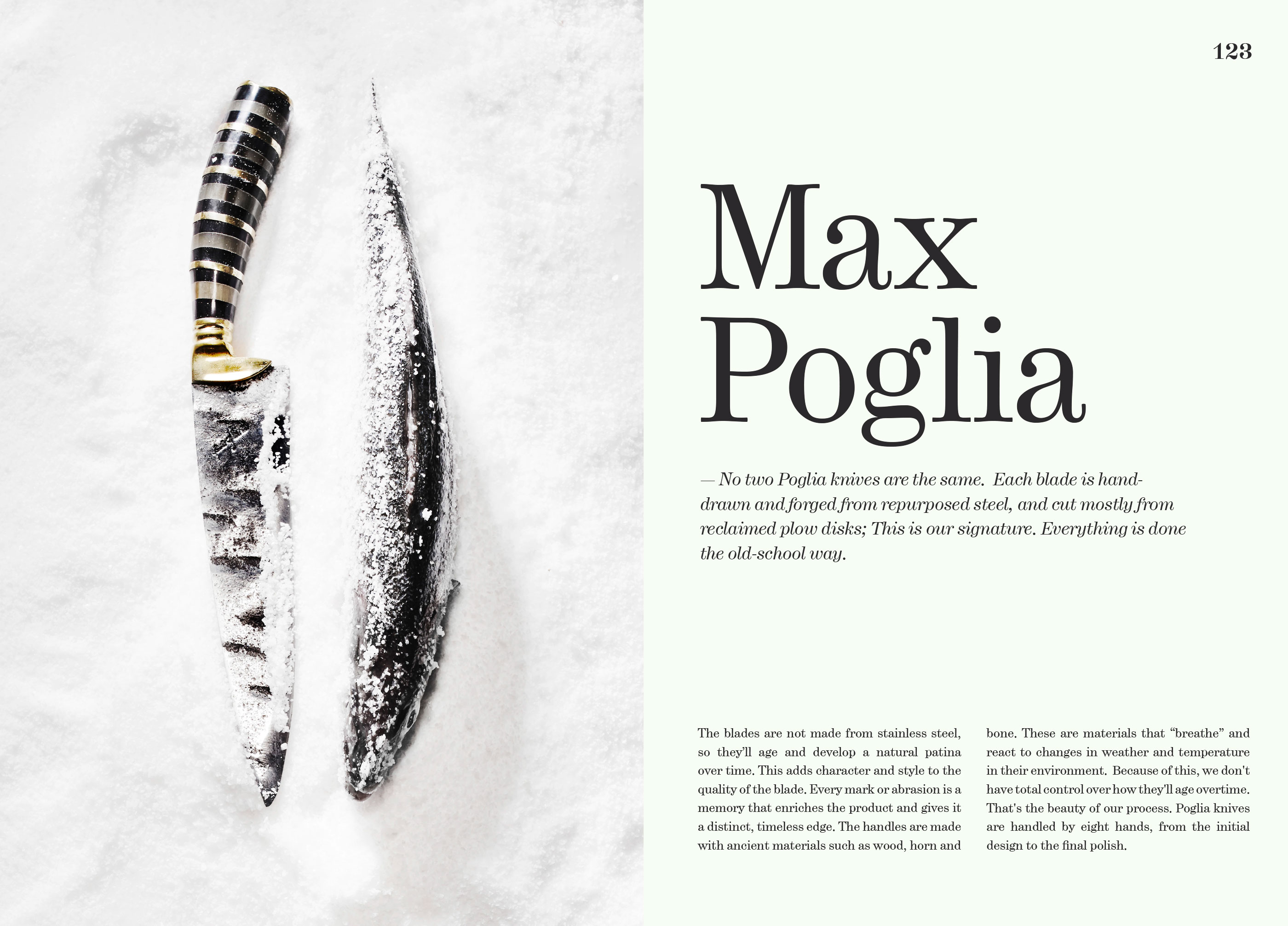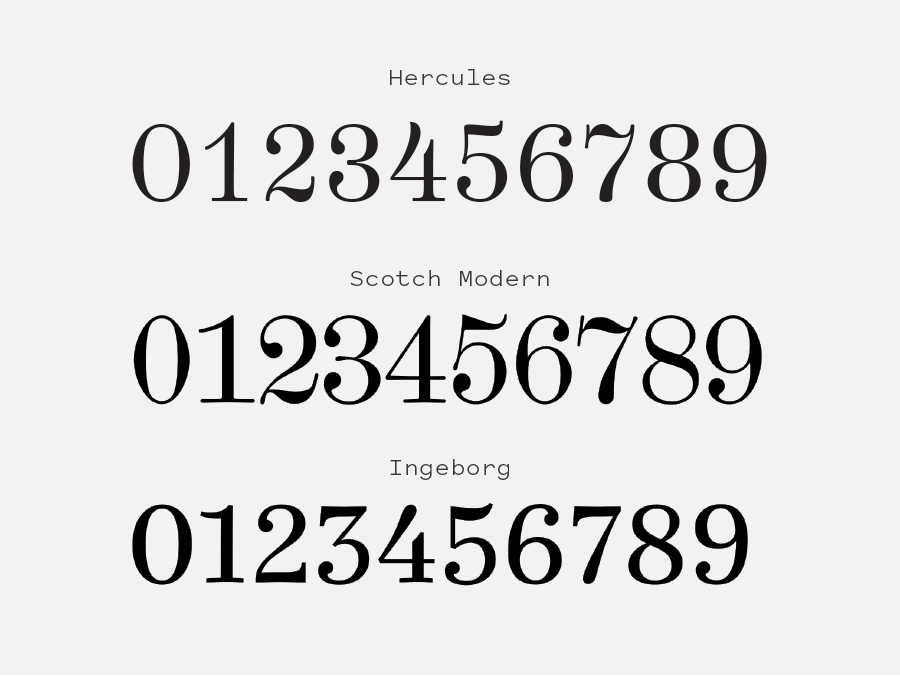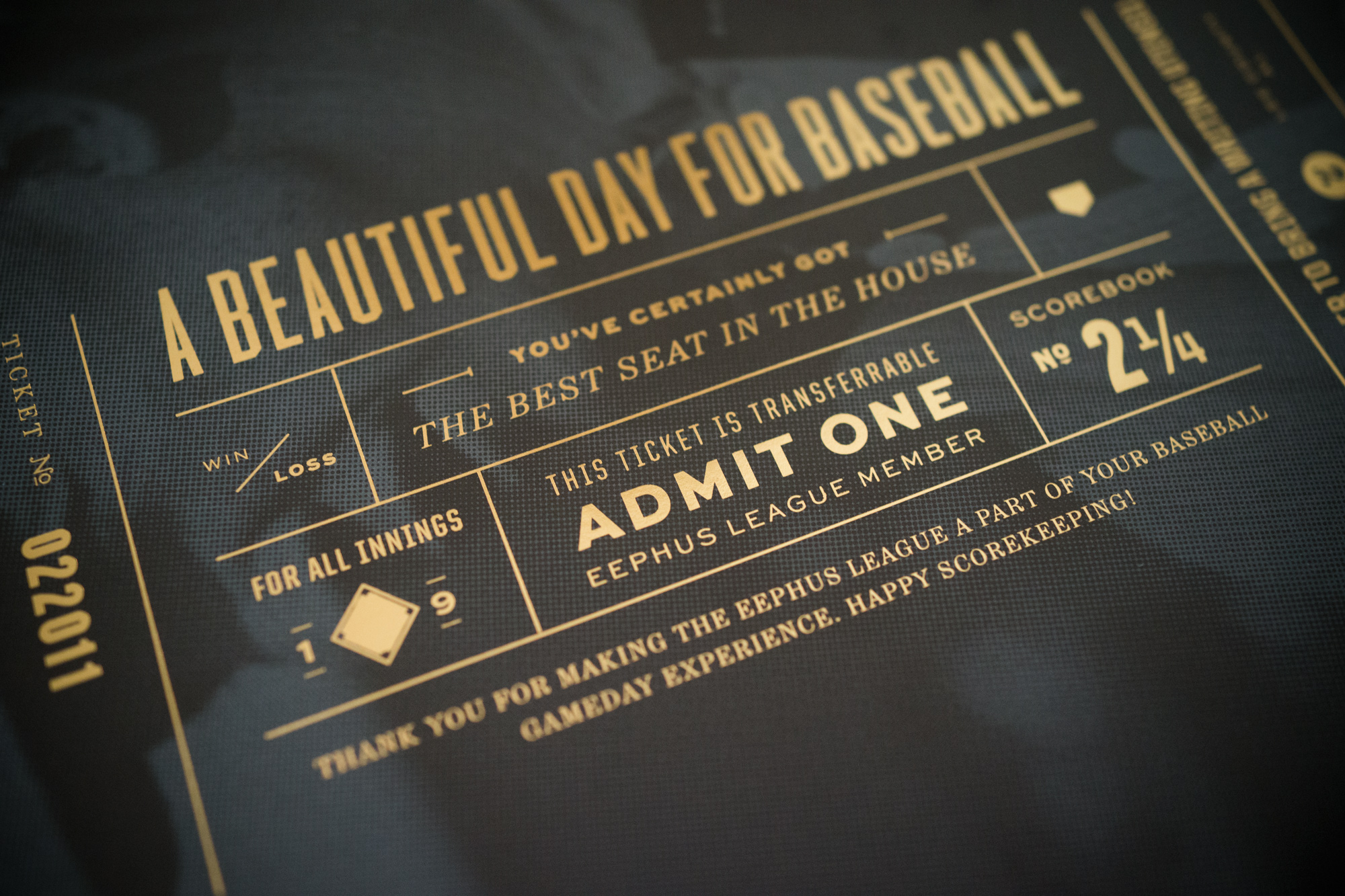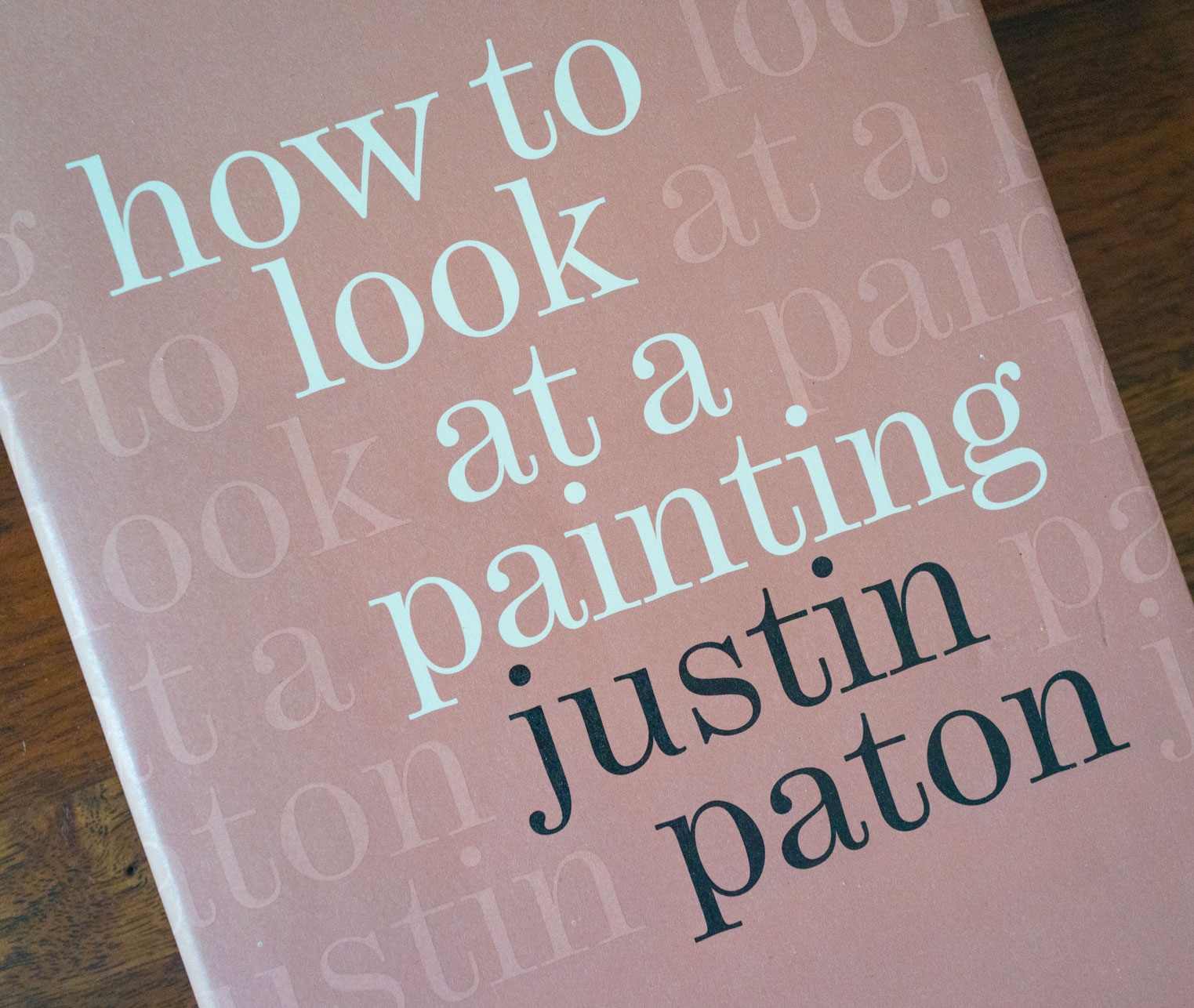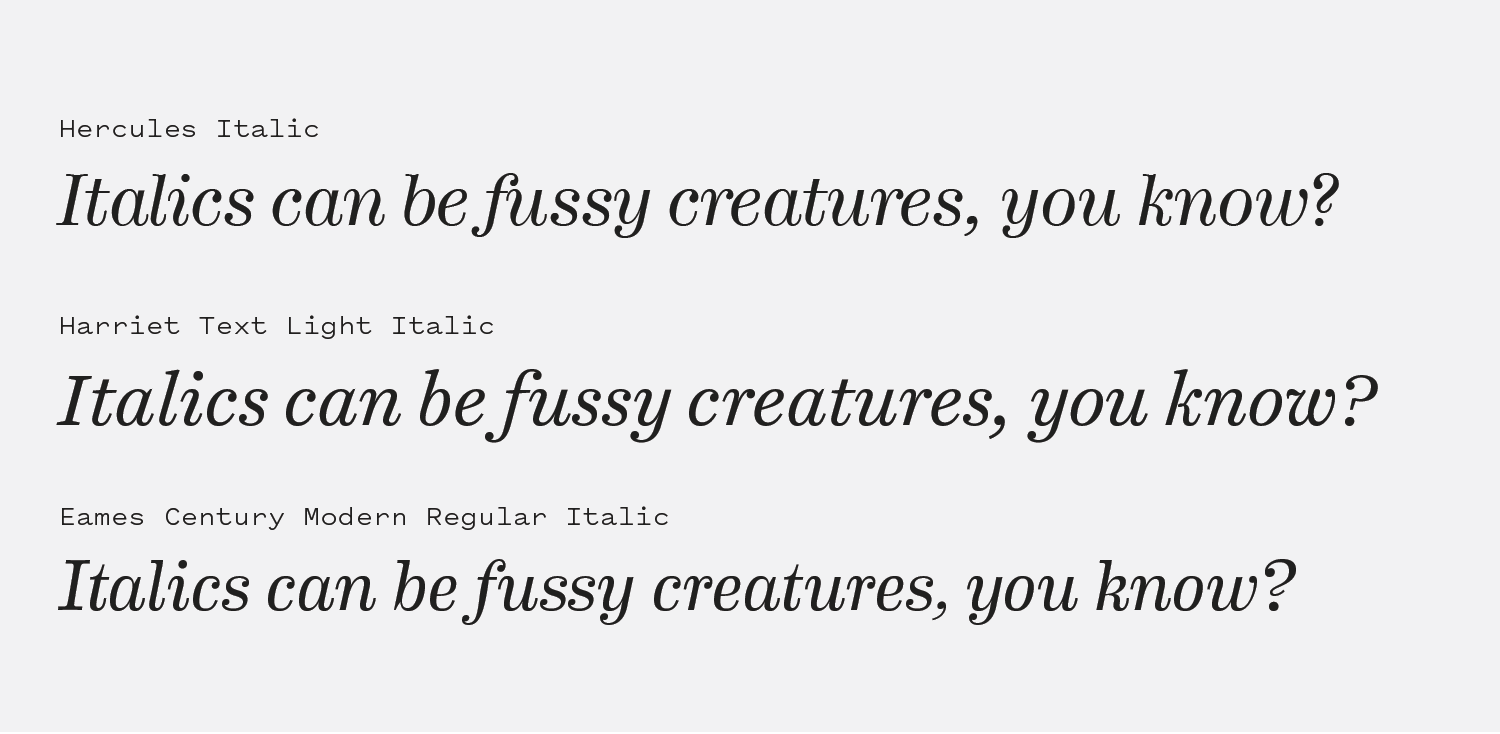I stumbled across Hercules in 2010 when I was starting work on the Eephus League. I wanted an old-fashioned serif that would hold the vintage aesthetic I needed for the brand, and something about Hercules stuck with me. The numerals are stunning, and it’s a little imbalanced in a way I find authentic and charming.
The tight apertures, ball terminals and excessive amount of spurs might normally put this typeface in the “fussy” category, but the slightly imperfect line quality mimics the impression of letters printed on a page and gives the font a worn-in quality that I love. Many modern Scotch typefaces are overly delicate and Hercules does a fine job of having the interesting characteristics of a Scotch while still feeling down to earth. It’s not a gaudy typeface in terms of weights or character set—this is not a superfamily. But Hercules does a lot with its conservative roster of weights and the corresponding italics, with each having several lovely characteristics that let the typeface hold its own in long-form reading environments or as a display face.
Hercules straddles the line between being distinct in its own right while still being able to be a supportive partner to other typefaces. It’s aided in this by the style’s historical ties to eclectic metal type pairings in booklets, magazines and advertising materials[6]. I’ve paired Hercules with showy typefaces like Brothers, Herald Gothic and Champion and it has always held its own and done its job to enforce the aesthetic.
When I was deciding on typefaces to cover on this site, it struck me that Hercules was exactly the kind of typeface I want to spotlight: A relatively unknown font that is affordable and has an interesting set of strengths and eccentricities. It’s been a great chance to reflect of my time using it and challenge myself to justify why I’ve stuck with it over the past 7 years instead of making an adjustment to a more well-known example of the genre. After spending several days working on this review, I think my instincts in college were right. Hercules was the best choice to intermingle with the Eephus League’s eclectic palette of typography, and I’m looking forward to spending many more years using it.

